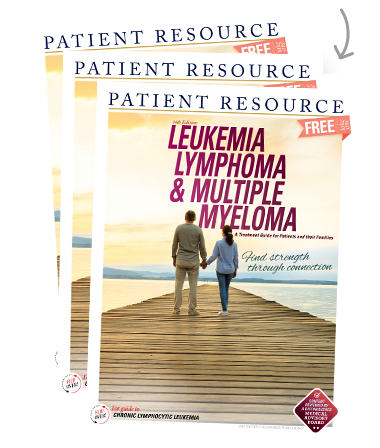Hodgkin Lymphoma
Hodgkin lymphoma is less common than non-Hodgkin lymphoma and frequently starts in the lymph nodes in the chest, neck or underarm. It may spread to other lymph nodes or organs, such as the liver or lungs.
The two main categories of Hodgkin lymphoma are classical Hodgkin lymphoma and nodular lymphocyte-predominant Hodgkin lymphoma.
- Classical Hodgkin lymphoma, which is by far the most frequent, has four main subtypes: nodular sclerosis, mixed cellularity, lymphocyte-rich and lymphocyte-depleted.
- Nodular lymphocyte-predominant Hodgkin lymphoma accounts for the rest of the Hodgkin lymphoma diagnoses.
Treating Hodgkin Lymphoma
Many factors are considered when determining the best treatment option for your type, including the stage of the disease, the extent of the lymphoma, the disease subtype, presence of symptoms, and your age, gender and overall health. A variety of options are available.
Chemotherapy is the main treatment for Hodgkin lymphoma. These are drugs that stop the growth of cancer cells. It may be a first-line therapy, which means you receive it before other types of treatment. Usually, people will receive multiple drugs for a certain amount of time.
If a first-line therapy (first treatment used) does not work – or stops working – you may receive second-line therapy. Several chemotherapy combinations for both may be considered.
You may also receive chemotherapy along with radiation therapy or before a stem cell transplant.
Radiation therapy may be given after chemotherapy for classical Hodgkin lymphoma. This is more likely for a large or bulky tumor. Doctors may use it alone to treat early-stage nodular lymphocyte-predominant Hodgkin lymphomas, or they may combine it with other types of treatment for a later stage of this type of Hodgkin lymphoma.
External beam radiation therapy (EBRT) is the most common type of radiation therapy used. It delivers a beam of radiation from a machine outside of the body. Total body irradiation is a type of EBRT given to the entire body. You may receive this before stem cell transplantation.
Targeted therapies are drugs or other substances that interfere with the specific molecules involved in the development of tumor cells. Monoclonal antibodies (mAbs — pronounced “mabs”) may be an option for both types of Hodgkin lymphoma. The mAbs are laboratory-made versions of immune system proteins designed to attack cancer cells. A mAb that carries a toxin to the cancer cell, called an antibody drug conjugate, may be used as a first-line treatment of later-stage classical Hodgkin lymphoma along with chemotherapy.
Immunotherapy is drug therapy that helps your immune system identify and destroy lymphoma cells. Immune checkpoint inhibitors are approved to treat some cases of classical Hodgkin lymphoma. Immune checkpoint inhibitors block checkpoints that cancer cells take advantage of to keep from being attacked by the immune system. Those approved are for classical Hodgkin lymphoma that has progressed after previous lines of therapy.
Stem cell transplantation may be used if other treatment options are not effective. Doctors most often use stem cells from the patient’s own body (an autologous stem cell transplant). These are harvested, frozen and returned to the patient after high-dose chemotherapy.
Watchful waiting is an option for people with nodular lymphocyte-predominant Hodgkin lymphoma who do not have symptoms or sometimes for women who are pregnant.
Surgery is not used for most lymphomas but may be used to remove a tumor or the spleen.
Corticosteroids may be combined with chemotherapy to help it work better.
Clinical trials may offer you access to new therapies not otherwise available.
Understanding Refractory and Relapsed Hodgkin Lymphoma
The goal of treatment is remission, which is when you do not have cancer symptoms and your doctor cannot detect any lymphoma in your body. Remission may be temporary or permanent.
If initial treatment does not result in complete remission, the disease is known as primary refractory Hodgkin lymphoma. Your doctor may suggest different drug therapies.
Hodgkin lymphoma sometimes returns (relapses). If this happens, your doctor will review your diagnosis and may choose a different treatment option. This often involves using a second-line combination chemotherapy treatment. It may include radiation therapy and a stem cell transplant. Your doctor may suggest a clinical trial.
Common Drug Therapies for Hodgkin Lymphoma
| Commonly Used Medications for Hodgkin Lymphoma |
| Chemotherapy |
| bleomycin (Blenoxane) |
| brentuximab vedotin (Adcetris) |
| chlorambucil (Leukeran) |
| cyclophosphamide |
| dacarbazine (DTIC-Dome) |
| doxorubicin hydrochloride (Adriamycin) |
| mechlorethamine (Mustargen) |
| nivolumab (Opdivo) |
| pembrolizumab (Keytruda) |
| prednisone |
| procarbazine (Matulane) |
| vinblastine (Velban) |
| vincristine (Oncovin) |
| Some Possible Combination Therapies |
| AAVD: doxorubicin (Adriamycin), brentuximab vedotin (Adcetris), vinblastine (Velban) and dacarbazine (DTIC-Dome) |
| ABVD: doxorubicin (Adriamycin), bleomycin (Blenoxane), vinblastine (Velban) and dacarbazine (DTIC-Dome) |
| ABVD + R: doxorubicin (Adriamycin), bleomycin (Blenoxane), vinblastine (Velban), dacarbazine (DTIC-Dome) and rituximab (Rituxan) |
| BEACOPP: bleomycin (Blenoxane), etoposide (Etopophos), doxorubicin (Adriamycin), cyclophosphamide, vincristine (Oncovin), procarbazine (Matulane) and prednisone |
| ChlVPP: chlorambucil (Leukeran), vinblastine (Velban), procarbazine (Matulane) and prednisone |
| DHAP: dexamethasone, high-dose cytarabine and cisplatin |
| ESHAP: etoposide (Etopophos), methylprednisolone, high-dose cytarabine and cisplatin |
| GDP: gemcitabine (Gemzar), dexamethasone and cisplatin |
| Gem-Ox: gemcitabine (Gemzar) and oxaliplatin (Eloxatin) |
| GVD: gemcitabine (Gemzar), vinorelbine (Navelbine) and doxorubicin |
| ICE: ifosfamide, carboplatin and etoposide (Etopophos) |
| Stanford V: doxorubicin (Adriamycin), mechlorethamine (Mustargen), vincristine (Oncovin), bleomycin (Blenoxane), etoposide (Etopophos) and prednisone |



